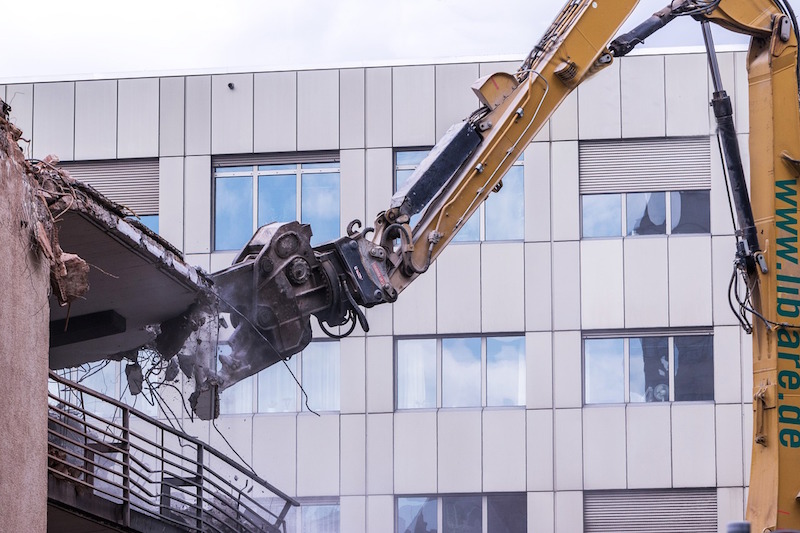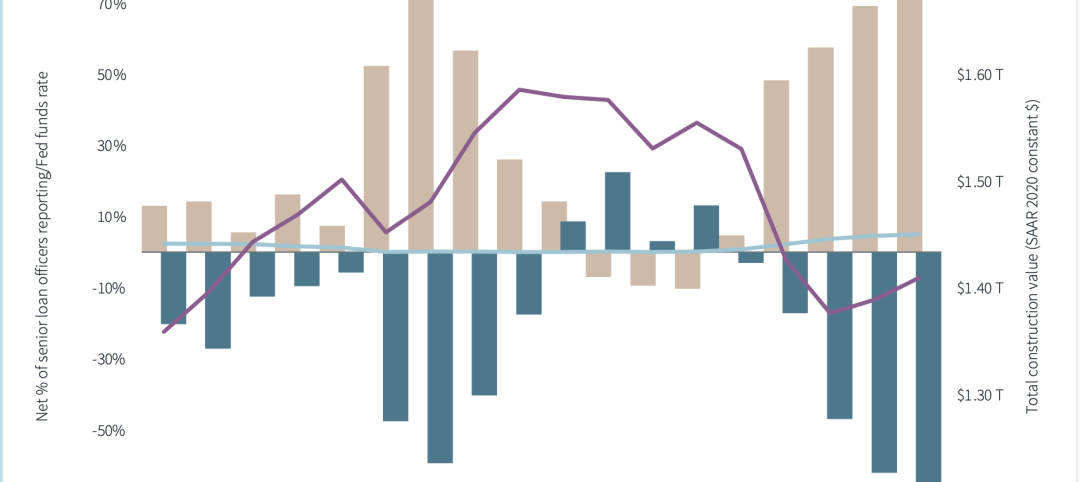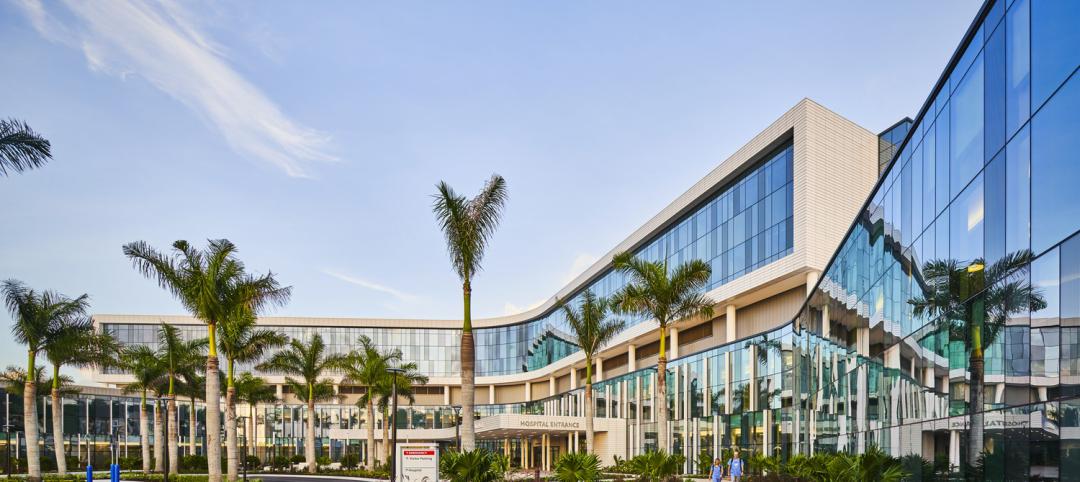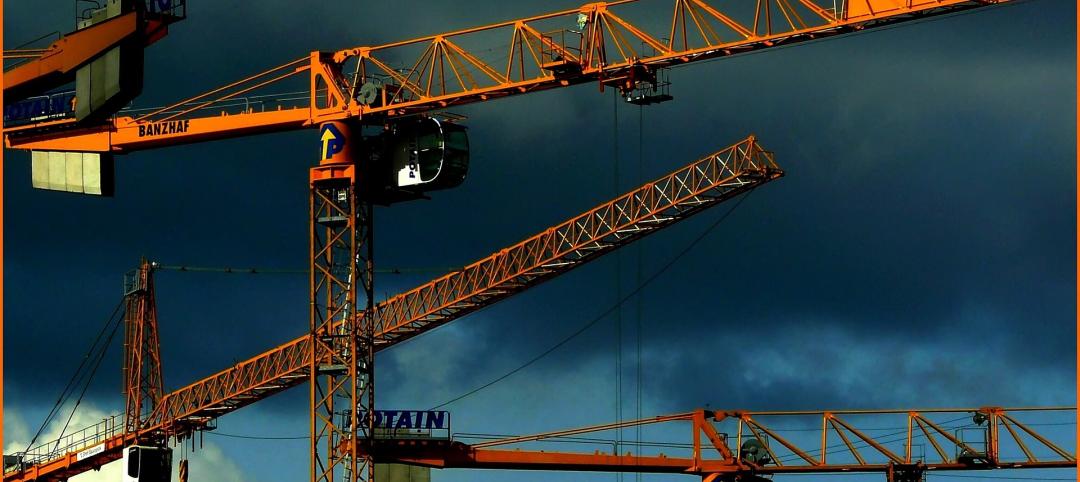The new Trump Administration’s aggressive policies, particularly on international trade and immigration reform, could, if executed as planned, “greatly affect” how America’s construction industry does business this year and beyond.
In its Q4 2016 Construction Outlook, which it released earlier this week, JLL also continued to see construction labor as a “pain point” for the industry that will cause wages to rise and impact project timelines and budgets. And materials costs, which for the most part stabilized in the latter months of 2016, should hold steady if, as expected, construction activity slows this year.
Twenty-sixteen was a banner year for construction spending. Led by the hotel and office sectors, spending increased over the previous year by 4.5% to $1.2 trillion. That rate of growth was nearly triple the GDP inflation rate.
Nationally, the construction and contractor backlog in Q4 2016 stood at 8.7 months of future work across all sectors, up 2.2 percent from the fourth quarter 2015 and tracking closely with national trends. The Midwest in particular enjoyed sizable year-over-year growth that quarter, while work in the South remains steady. The Northeast and West regions continued to slip, each well below 2015 levels.
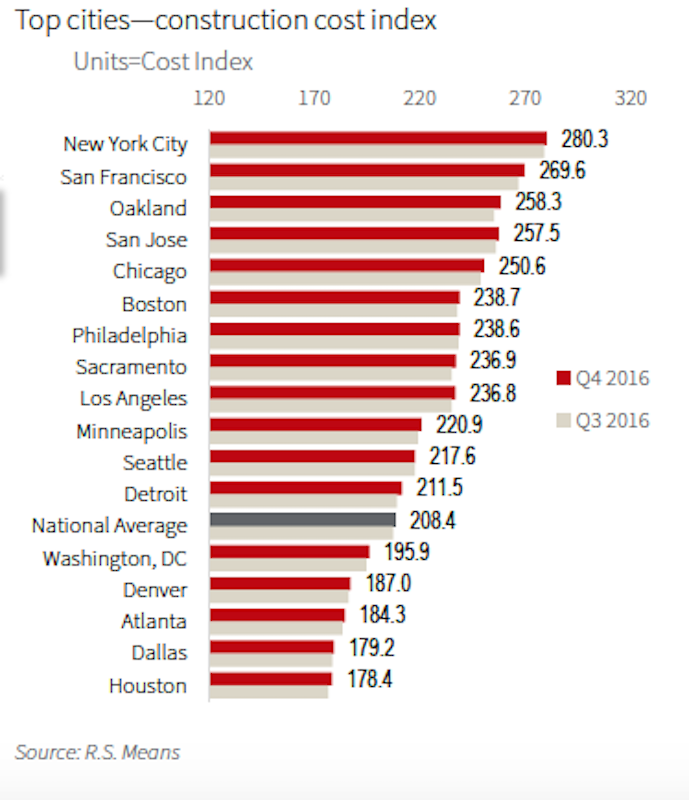
Not surprisingly, construction costs are rising faster in metros where construction activity has been robust, but also where labor is in shorter supply. Image: JLL Research
Building costs rose nationally by a modest 2.7%, with nearly half of that increase occurring in the fourth quarter, spurred by strong residential construction that drove demand, and uncertainly surrounding the effects of the Trump presidency.
JLL doesn’t expect the manifestations of policy decisions coming out of Washington to intervene on the construction industry until later this year. But JLL’s forecast strikes a cautionary pose about the prospects of “voided international trade deals and new import tariffs [that] could drive up materials costs faster.”
And at a time when construction unemployment continues to fall—last week, AGC America reported that from January 2016 to January 2017 construction employment rose in 39 states and in 216 of 358 metro areas—immigration reform “could shrink the skilled labor supply and spur further wage increases,” says JLL’s report. Large-scale infrastructure projects will create a premium on materials and workforce in specific markets such as Oakland and San Francisco, Chicago, and New York.
Inflation in materials costs is harder to gauge when trade agreements are in flux. The largest price swings in 4Q 2016 were seen on the cement and lumber fronts: cement costs were down 4.7% compared to the same time last year, while lumber was priced 9%-plus higher. Steel, on the other hand, maintained negligible price changes, not even breaking one-tenth of a percentage point over third-quarter prices.
One barometer worth keeping an eye on is the IHS Markit PEG Engineering and Construction Cost Index, which tracks procurement activity among engineering and construction firms. In March, that Index registered its fifth consecutive month of rising prices.
Eight of 12 materials/equipment categories tracked showed rising prices in March. And the six-month expectation index stayed positive, although materials and equipment prices are projected to rise at a slower pace than subcontractor labor.
Related Stories
Market Data | Oct 2, 2023
Nonresidential construction spending rises 0.4% in August 2023, led by manufacturing and public works sectors
National nonresidential construction spending increased 0.4% in August, according to an Associated Builders and Contractors analysis of data published today by the U.S. Census Bureau. On a seasonally adjusted annualized basis, nonresidential spending totaled $1.09 trillion.
Giants 400 | Sep 28, 2023
Top 100 University Building Construction Firms for 2023
Turner Construction, Whiting-Turner Contracting Co., STO Building Group, Suffolk Construction, and Skanska USA top BD+C's ranking of the nation's largest university sector contractors and construction management firms for 2023, as reported in Building Design+Construction's 2023 Giants 400 Report. Note: This ranking includes revenue for all university/college-related buildings except student residence halls, sports/recreation facilities, laboratories, S+T-related buildings, parking facilities, and performing arts centers (revenue for those buildings are reported in their respective Giants 400 ranking).
Construction Costs | Sep 28, 2023
U.S. construction market moves toward building material price stabilization
The newly released Quarterly Construction Cost Insights Report for Q3 2023 from Gordian reveals material costs remain high compared to prior years, but there is a move towards price stabilization for building and construction materials after years of significant fluctuations. In this report, top industry experts from Gordian, as well as from Gilbane, McCarthy Building Companies, and DPR Construction weigh in on the overall trends seen for construction material costs, and offer innovative solutions to navigate this terrain.
Data Centers | Sep 21, 2023
North American data center construction rises 25% to record high in first half of 2023, driven by growth of artificial intelligence
CBRE’s latest North American Data Center Trends Report found there is 2,287.6 megawatts (MW) of data center supply currently under construction in primary markets, reaching a new all-time high with more than 70% already preleased.
Contractors | Sep 12, 2023
The average U.S. contractor has 9.2 months worth of construction work in the pipeline, as of August 2023
Associated Builders and Contractors' Construction Backlog Indicator declined to 9.2 months in August, down 0.1 month, according to an ABC member survey conducted from Aug. 21 to Sept. 6. The reading is 0.5 months above the August 2022 level.
Contractors | Sep 11, 2023
Construction industry skills shortage is contributing to project delays
Relatively few candidates looking for work in the construction industry have the necessary skills to do the job well, according to a survey of construction industry managers by the Associated General Contractors of America (AGC) and Autodesk.
Market Data | Sep 6, 2023
Far slower construction activity forecast in JLL’s Midyear update
The good news is that market data indicate total construction costs are leveling off.
Giants 400 | Sep 5, 2023
Top 80 Construction Management Firms for 2023
Alfa Tech, CBRE Group, Skyline Construction, Hill International, and JLL top the rankings of the nation's largest construction management (as agent) and program/project management firms for nonresidential buildings and multifamily housing work, as reported in Building Design+Construction's 2023 Giants 400 Report.
Giants 400 | Sep 5, 2023
Top 150 Contractors for 2023
Turner Construction, STO Building Group, DPR Construction, Whiting-Turner Contracting Co., and Clark Group head the ranking of the nation's largest general contractors, CM at risk firms, and design-builders for nonresidential buildings and multifamily buildings work, as reported in Building Design+Construction's 2023 Giants 400 Report.
Market Data | Sep 5, 2023
Nonresidential construction spending increased 0.1% in July 2023
National nonresidential construction spending grew 0.1% in July, according to an Associated Builders and Contractors analysis of data published today by the U.S. Census Bureau. On a seasonally adjusted annualized basis, nonresidential spending totaled $1.08 trillion and is up 16.5% year over year.


